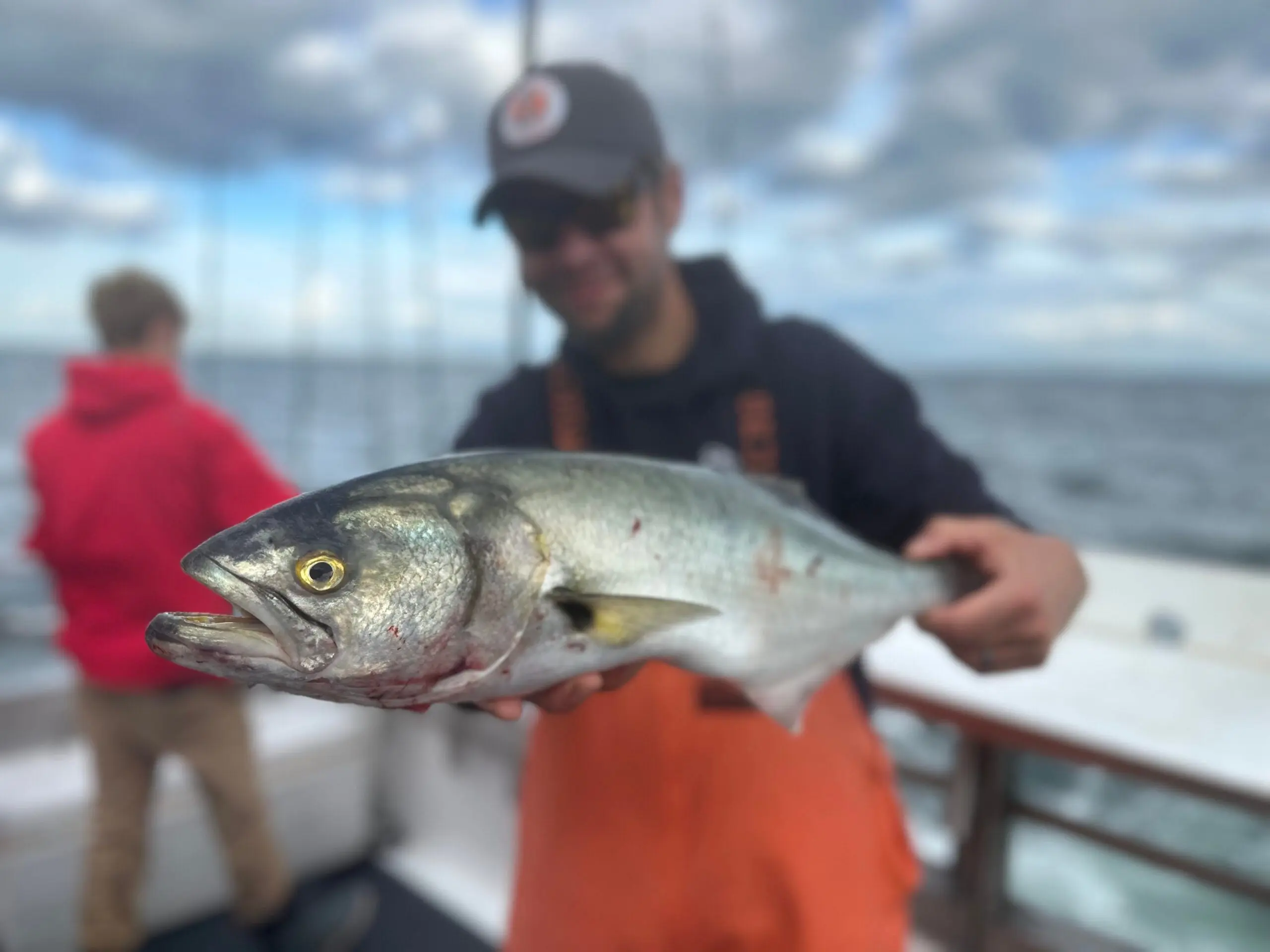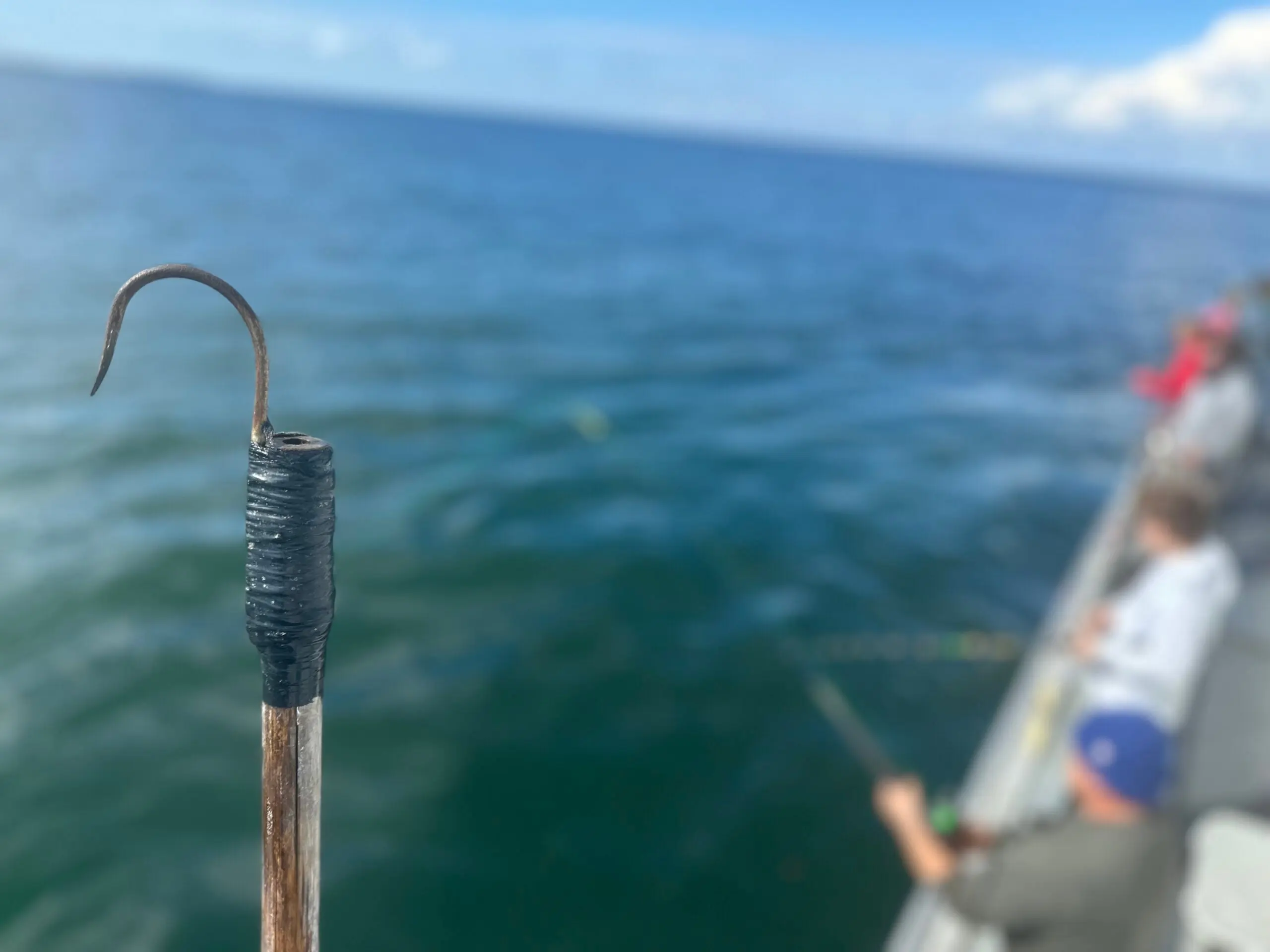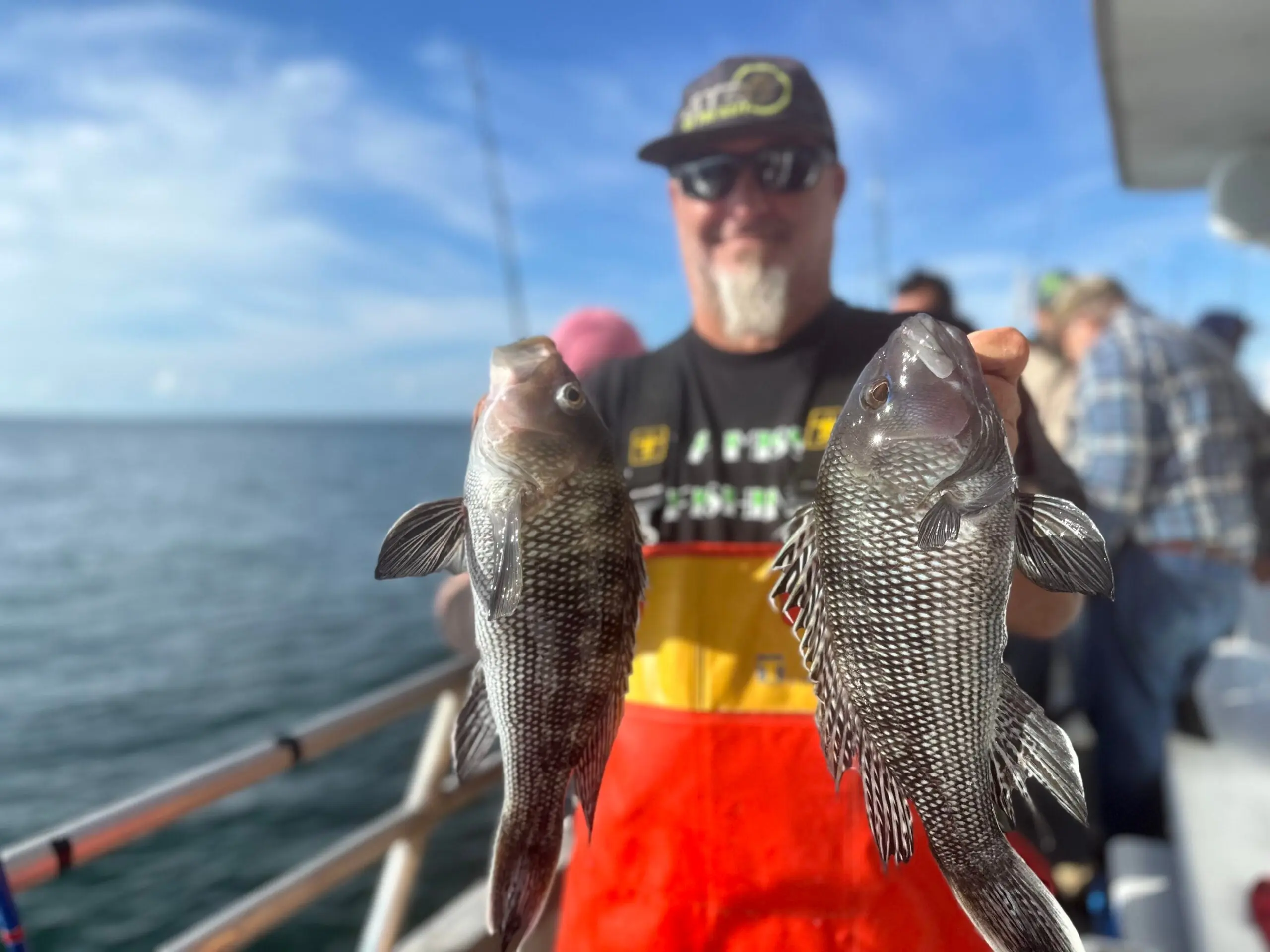Party boat, drift boat, head boat. The names change depending on where you are in the country, but they’re all the same thing: large fishing vessels sailing for a variety of saltwater species that anyone can hop aboard for a reasonable fee. For many anglers, party boats are their only means of getting offshore, which explains why on every coast where they exist, you’ll find regular patrons that are often ringers, capable of outfishing everyone even on slow days.
Of course, for every trip loaded with seasoned vets, there are plenty of voyages comprised of mainly rookies, tourists, and first timers. I was one of them many years ago, and credit my first giant bluefish, keeper flounder
, and striped bass
to party boat trips.
Recently, I went bluefishing on the Blackhawk III
in Niantic, Connecticut, and was flooded with nostalgia. It had been too many years since I shared the rail with a party boat crowd, and I enjoyed the people watching as much as (maybe even more than) the catching. Successful party boat angling requires a little pre-planning, coordination, and a willingness to work with others. There are, however, always a few bad eggs that gunk up the works. Don’t be any of these guys, and I guarantee you’ll put more fish on deck whether you’re hopping aboard in Florida, New Jersey, Texas, or San Diego.

A keeper blue for the author. Joe Cermele
The Jockey
There is an unspoken rule in party boat fishing that says wherever you plant your rod is where you fish. Like miners during the gold rush, you must stake your claim and stick with your choice. Position, of course, can matter. If a boat advertises that it’s leaving the dock at 8 a.m., rest assured the regulars are there at 6:30 and they’ve already put their rods in the holders and tied their bait towels to the rail in their favorite spots. Quite often, this is in the corner of the stern, and for good reason.
By taking the rear corner, you have a little more room to move your rod left or right. Conversely, if you’re smack in the middle of the boat and it’s crowded, you’re stuck dropping straight down. In scenarios where the boat is anchoring over a wreck or rock pile to bottom fish, the stern also routinely ends up over the best part of the structure because the sonar transducer is located near the rear. If chumming is involved, the stern is also prime because the slick will flow out behind the boat.
When drift fishing or jigging, being near the back of the boat is less critical. However, without fail, someone who’s not connecting will try to kern in on the section of the boat he or she perceives as the “hot spot.” This results in nothing but more tangles and frustration, and most of the time the problem isn’t the spot, it’s the angler, which leads to my next victim.
The Gear Skeptic
Based on the sheer number of lines in the water alone, party boat fishing is not an intimate experience like you and a buddy or two fishing on a private boat. So, what often happens is people bring their favorite, snazzy, light-tackle rod and end up being the pariah. While you might be able to beat a big fish on the outfit when you have room and all the time in the world, it may not let you overpower a tuna, bluefish, or grouper fast enough on a party boat to avoid tangling 600 other lines. I witnessed this on my Connecticut trip when a gent insisted on using a tiny slow-pitch jigging rod for bluefish weighing 15 pounds. No doubt the outfit was capable, but in that setting, the stick couldn’t wrench them in quick enough. After dealing with three massive tangles thanks to that rod, the mates insisted he use one of the boat’s heavier outfits.

A gaff hangs in the ready. Joe Cermele
On the flip side, I fished next to a fellow who was struggling to connect. The reasons for his failure ranged from the rental rod being too heavy to feel the bite, to his hammered metal jig not being as appealing as the non-hammered jigs with eyes, to his reel backlashing on one out of three drops.
The reality was that he simply didn’t listen to instructions, which were to drop the jig to the bottom, reel up ten times, and drop it back down again. He insisted on reeling all the way to the surface, which was not scoring bites. Party boat mates and captains are out there day in and day out, so when they tell you what to do—even if you don’t think it sounds right—do it anyway because they know best and they want everyone to catch fish.

The author’s buddy Eric shows off a couple keepers. Joe Cermele
The Dead Sticker
Under no circumstances should you drop a rig to the bottom, stick the rod in the holder, and kick back with a sandwich on a party boat. Period. Most tangles and snags that occur on these trips are a result of someone simply not paying attention to what their line is doing or where their rod is pointed. As an example, during my bluefish trip, I kept having to remind the dude on my right to keep his rod pointed straight out in front of him. It would start at that position with each new drift, but he’d get lost in conversation with his buddy and his rod tip would slowly creep into my (limited) personal space. Several times our lines became instantly crossed when I hooked up because he just wasn’t paying attention.
Dead sticking is the ultimate sin because it increases the likelihood that you’ll tangle someone’s line on the other side of the boat. This is especially true when drifting for species like snapper and flounder. Depending on which side of the boat you’re on, your line will either go under the boat or away from the boat. Harmony is only achieved when anglers on both sides are paying attention—if you’re line is under the boat you don’t want to let it out so far that it meets rigs on the other side, and if you’re on the other side you want to scope out some extra line for the same reason. Dead sticking places the line straight up and down along the side of the boat, so it ups the odds of rigs meeting in the middle. Bottom line, don’t be lazy. Hold the dang rod so you know exactly where you’re fishing and what your sinker or jig is doing at all times.


